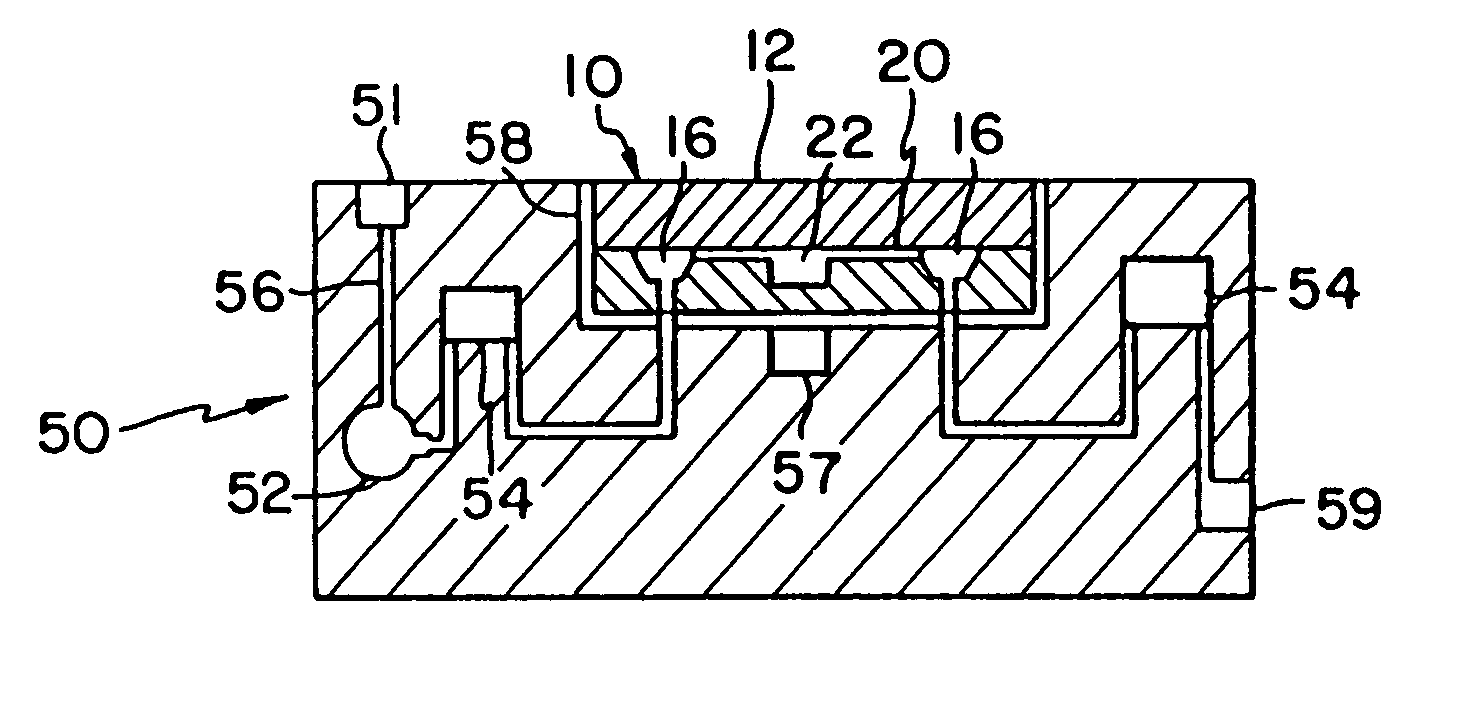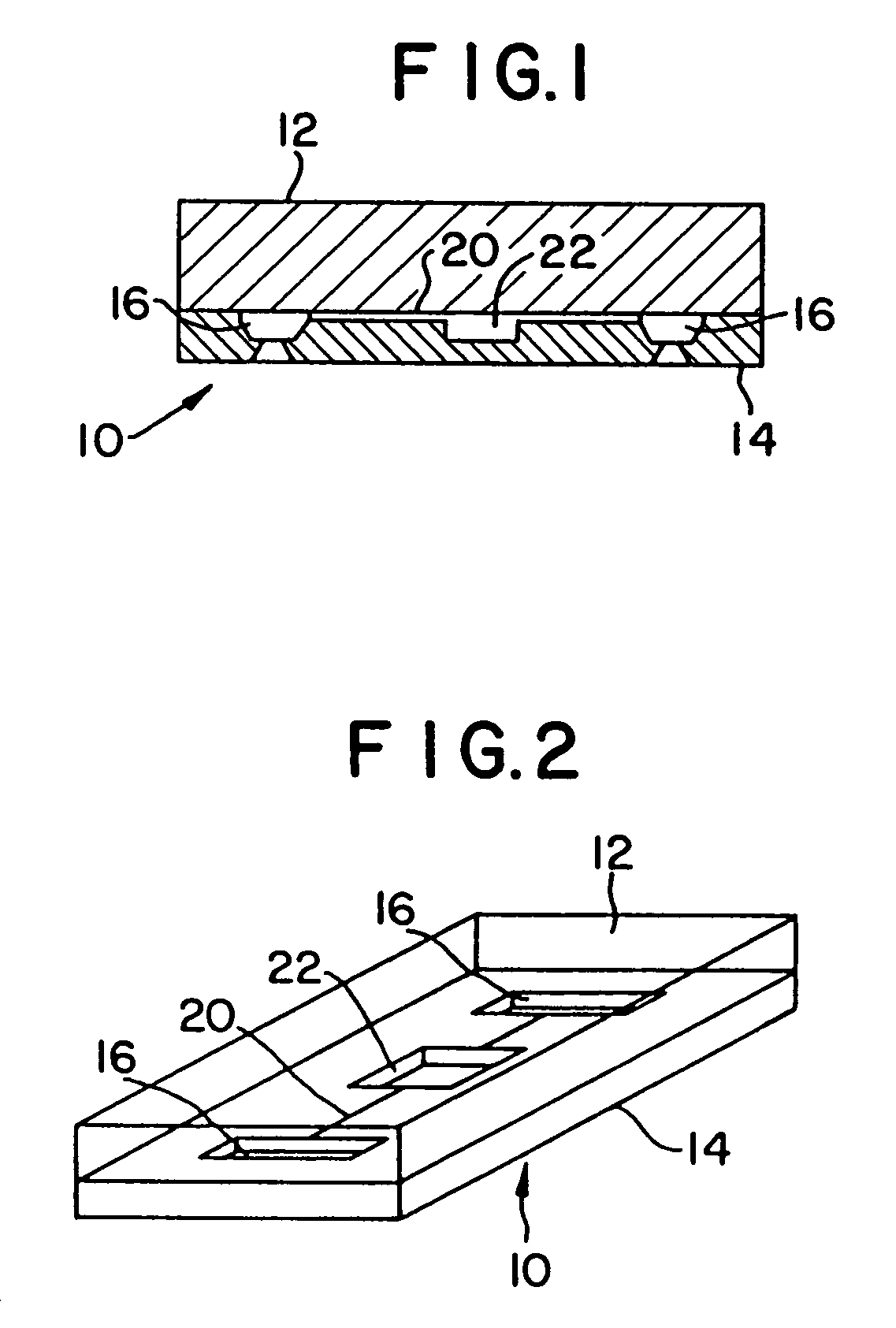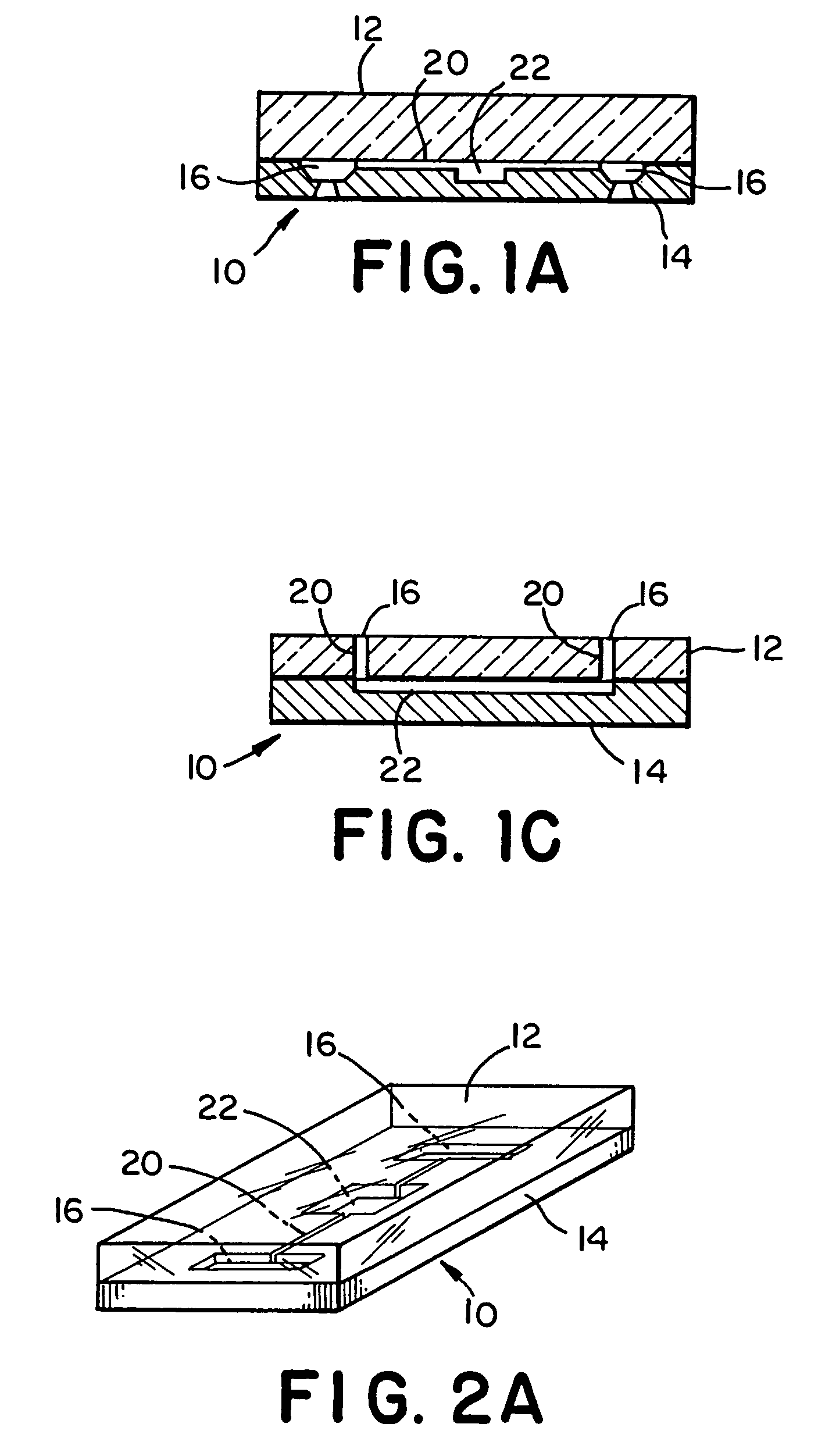Mesoscale polynucleotide amplification devices
a technology of mesoscale polynucleotide and amplification device, which is applied in the direction of sequential/parallele process reactions, positive displacement liquid engines, flow mixers, etc., can solve the problems that the wall surfaces of the mesoscale channel and the chamber could interfere with the amplification of polynucleotides, and achieve the effect of facilitating heat transfer through the substrate to and from the contents of the reaction chamber
- Summary
- Abstract
- Description
- Claims
- Application Information
AI Technical Summary
Benefits of technology
Problems solved by technology
Method used
Image
Examples
example 1
[0116]A polymerase chain reaction is performed in the device illustrated schematically in FIG. 11, provided with a mesoscale reaction chamber 22A. To perform a PCR analysis to detect a polynucleotide in a cell, a sample cell lysate is added to a buffered solution of Taq polymerase, nucleoside triphosphates, polynucleotide primers and other reagents required for PCR. The cell sample lysate is delivered via the appliance through entry port 16A to PCR reaction chamber 22A. Ports 16A and 16D are closed by means of valves included in the appliance. A microprocessor and temperature control element in the appliance are used to implement a temperature cycle in reaction chamber 22A between 94° C., for polynucleotide dehybridization, 40-60° C. for annealing and 70-75° C. for primer extension.
[0117]After the polymerase chain reaction is complete, ports 16B and 16D are opened, and the pump in the appliance connected to port 168 used to deliver the sample from the PCR reaction chamber 22A throug...
example 2
[0118]FIG. 12 depicts schematically a device 10 including substrate 14 used to separate a nucleic acid from a subpopulation of cells in a mixture in a biological fluid sample, and then to perform an assay for a particular nucleotide sequence. Microfabricated on device 10 is a mesoscale flow path 20 which includes a cell separation chamber 22A, a cell lysis chamber 228, filter region 24, a PCR reaction chamber comprising sections 22C and 22D, and a restricted flow detection region 40. The mesoscale flow system 20 is also provided with fluid entry / exit ports 16A, 16B, 16C and 16D. The device is used in combination with an appliance, such as appliance 50, shown in FIG. 6A.
[0119]Initially, the valves in the appliance are used to close ports 16C and 16D, while ports 16A and 16B are open. A sample containing a mixture of cells is directed to the sample inlet port 16A by the pump 52 in the appliance, and flows through the mesoscale flow path 20 to separation chamber 22A. Chamber 22A contai...
example 3
[0121]The amplification of a sample polynucleotide, (bacteriophage lambda DNA) in a mesoscale reaction chamber, having dimensions of 80 μm in depth, 8 mm in width and 14 mm in length, fabricated in a silicon substrate and passivated using different passivation methods was examined.
[0122]To conduct the reaction, PCR reagents (e.g., nucleotides, AmpliTaq DNA polymerase, primer and the bacteriophage lambda DNA sample) were mixed in tubes and transferred to the mesoscale reaction chamber in the silicon substrate. The final concentrations of the reactants were: nucleotides, 200 mM each, Taq polymerase, 0.25 U / 10 ml; primers, 1.0 mM each; DNA template, 0.1 ng per 10 ml. The thermal cycling (normally 35 cycles) was performed automatically using a computer controlled Peltier heater-cooler.
[0123]The results of this PCR reaction using different methods of passivation of the walls of the mesoscale reaction chamber fabricated in the silicon substrate are illustrated in FIG. 23. FIG. 23 is a dra...
PUM
| Property | Measurement | Unit |
|---|---|---|
| depth | aaaaa | aaaaa |
| depth | aaaaa | aaaaa |
| depth | aaaaa | aaaaa |
Abstract
Description
Claims
Application Information
 Login to View More
Login to View More - R&D
- Intellectual Property
- Life Sciences
- Materials
- Tech Scout
- Unparalleled Data Quality
- Higher Quality Content
- 60% Fewer Hallucinations
Browse by: Latest US Patents, China's latest patents, Technical Efficacy Thesaurus, Application Domain, Technology Topic, Popular Technical Reports.
© 2025 PatSnap. All rights reserved.Legal|Privacy policy|Modern Slavery Act Transparency Statement|Sitemap|About US| Contact US: help@patsnap.com



